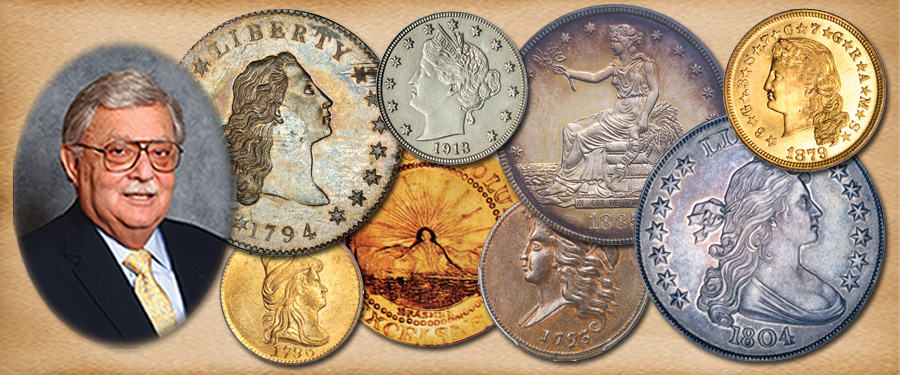
The Mint Finds a Hoard of Carson City Morgan Dollars
Earlier I mentioned the Morgan silver dollars that were released from storage during the mid 20th century. To continue that story, during an audit made in 1964 the Mint discovered a hoard of Carson City silver dollars, mostly original bags that were not melted as the result of the Pittman Act of 1918.
The Carson City dollars were inventoried and the Mint found that they had a group of dollars, which were scarce, rare and primarily in Mint State. For some reason these had escaped being melted into bars. When sorted by date, 2,825,319 were found with the following counts.
1878 CC: 60,993
1879 CC: 4,123
1880 CC: 131,529
1881 CC: 147,485
1882 CC: 605,028
1883 CC: 605,029
1884 CC: 962,638
1885 CC: 148,285
1889 CC: 1
1890 CC: 3,949
1891 CC: 5,687
1892 CC: 1
1893 CC: 1
These were determined to be in Mint State. They were sorted into two categories: Average Mint State with the expected nicks, scratches, rubs, etc. that many coins develop – even in original bags – due to counting and re-bagging; and higher end Mint State that were less marked up. These coins were sorted by white-gloved Mint employees and some professional numismatists that the General Services Administration (GSA) and the Mint employed to do the job.
Those judged to be of Extra Ordinary Uncirculated (Mint State) Quality were packaged in 3 x 8 inch wide sealed plastic holders that were stamped with CARSON CITY above the coin and UNCIRCULATED and SILVER DOLLAR below the coin. The plastic holder and a special card were enclosed in a box. The card was stamped "As we approach America’s Bicentennial this Silver Dollar is one of the most valued reminders of our National Heritage. RICHARD NIXON." A perfect way to pitch this sale with a presidential endorsement!
The GSA felt that the card and box would add value and distinction to the items they were selling. There were eight sales from 1972 to 1980, as the GSA attempted to entice collectors and non-collectors to purchase these relics of the history of the West and our National interest in "hard currency." The actual sales figures were never published in a public record.
The quantities for most years of Carson City dollars were known, but premiums received by these sales were only expressed in dollars. The sales totaled some $107 million for the slightly over $2.8 million in face value originally found, resulting in a profit for the United States of over $100 million. This was quite a nice profit for storing these coins for years and not melting them.
The number found did allow some rare and scarce Carson City silver dollars dates to stay within the range of most collectors. Additionally the marketing and sales of these coins attracted many people to numismatics. Most of these dates have held their value in the period from 1980 until now (some 35 years), and most have increased in value as they became dispersed. However, this large Carson City discovery was sometimes costly to those who had acquired specimens before the hoard was found.
So I will end with the old adage: "Value grows often as things age and get spread out, and interest in numismatics has been rewarding over time."





